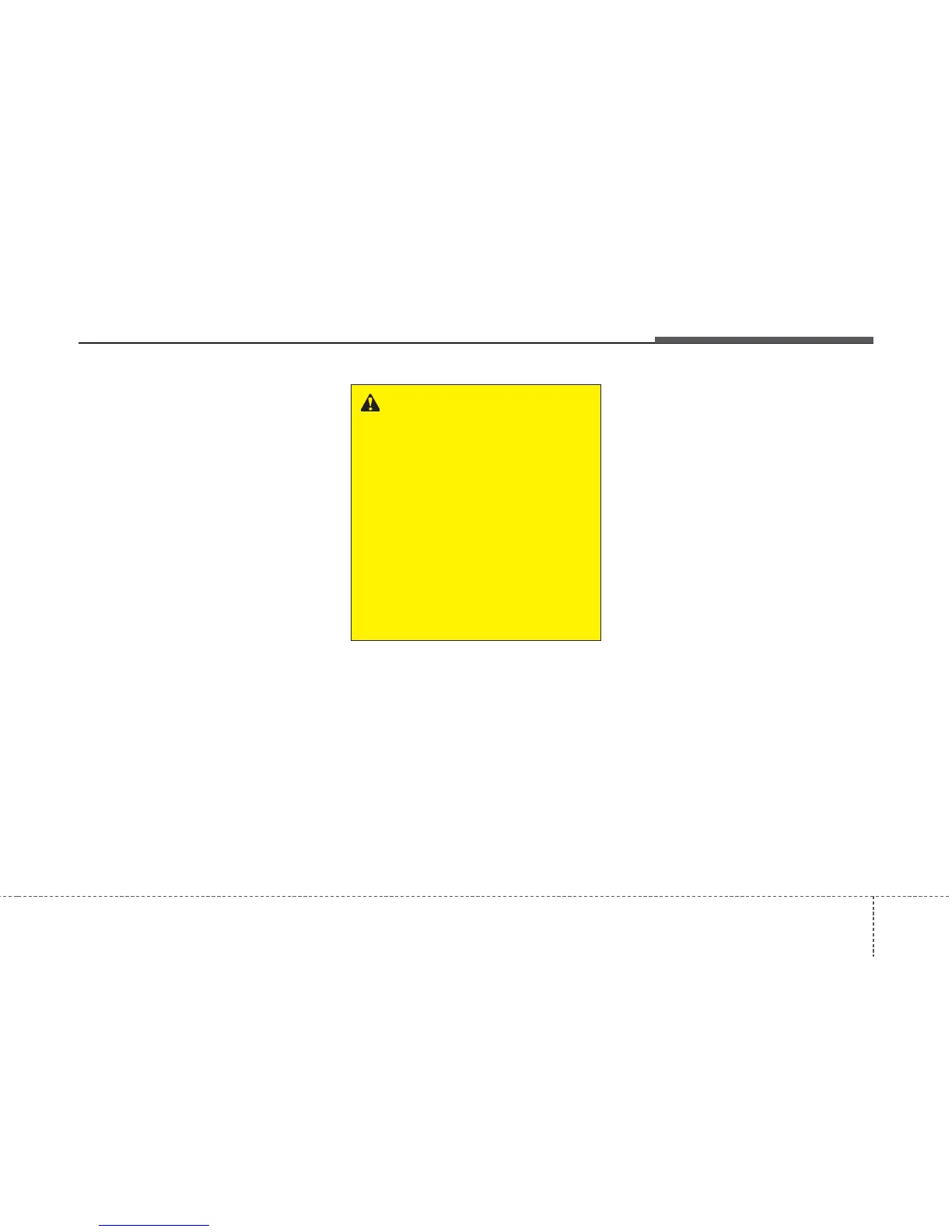935
Maintenance
3. Checking tyre life (TIN : Tyre
Identification Number)
Any tyres that are over 6 years old,
based on the manufacturing date,
(including the spare tyre) should be
replaced by new ones. You can find the
manufacturing date on the tyre sidewall
(possibly on the inside of the wheel),
displaying the DOT Code. The DOT
Code is a series of numbers on a tyre
consisting of numbers and English
letters. The manufacturing date is
designated by the last four digits
(characters) of the DOT code.
DOT : XXXX XXXX OOOO
The front part of the DOT means a plant
code number, tyre size and tread pattern
and the last four numbers indicate week
and year manufactured.
For example:
DOT XXXX XXXX 1611 represents that
the tyre was produced in the 16th week
of 2011.
4. Tyre ply composition and material
The number of layers or plies of rubber-
coated fabric in the tyre. Tyre
manufacturers also must indicate the
materials in the tyre, which include steel,
nylon, polyester, and others. The letter
"R" means radial ply construction; the
letter "D" means diagonal or bias ply
construction; and the letter "B" means
belted-bias ply construction.
5. Maximum permissible inflation
pressure
This number is the greatest amount of air
pressure that should be put in the tyre.
Do not exceed the maximum permissible
inflation pressure. Refer to the Tyre and
Loading Information label for
recommended inflation pressure.
WARNING - Tyre age
Tyres degrade over time, even
when they are not being used.
Regardless of the remaining tread,
it is recommended that tyres
generally be replaced after six (6)
years of normal service. Heat
caused by hot climates or frequent
high loading conditions can
accelerate the aging process.
Failure to follow this warning can
result in sudden tyre failure, which
could lead to a loss of control and
an accident involving serious
injury or death.

